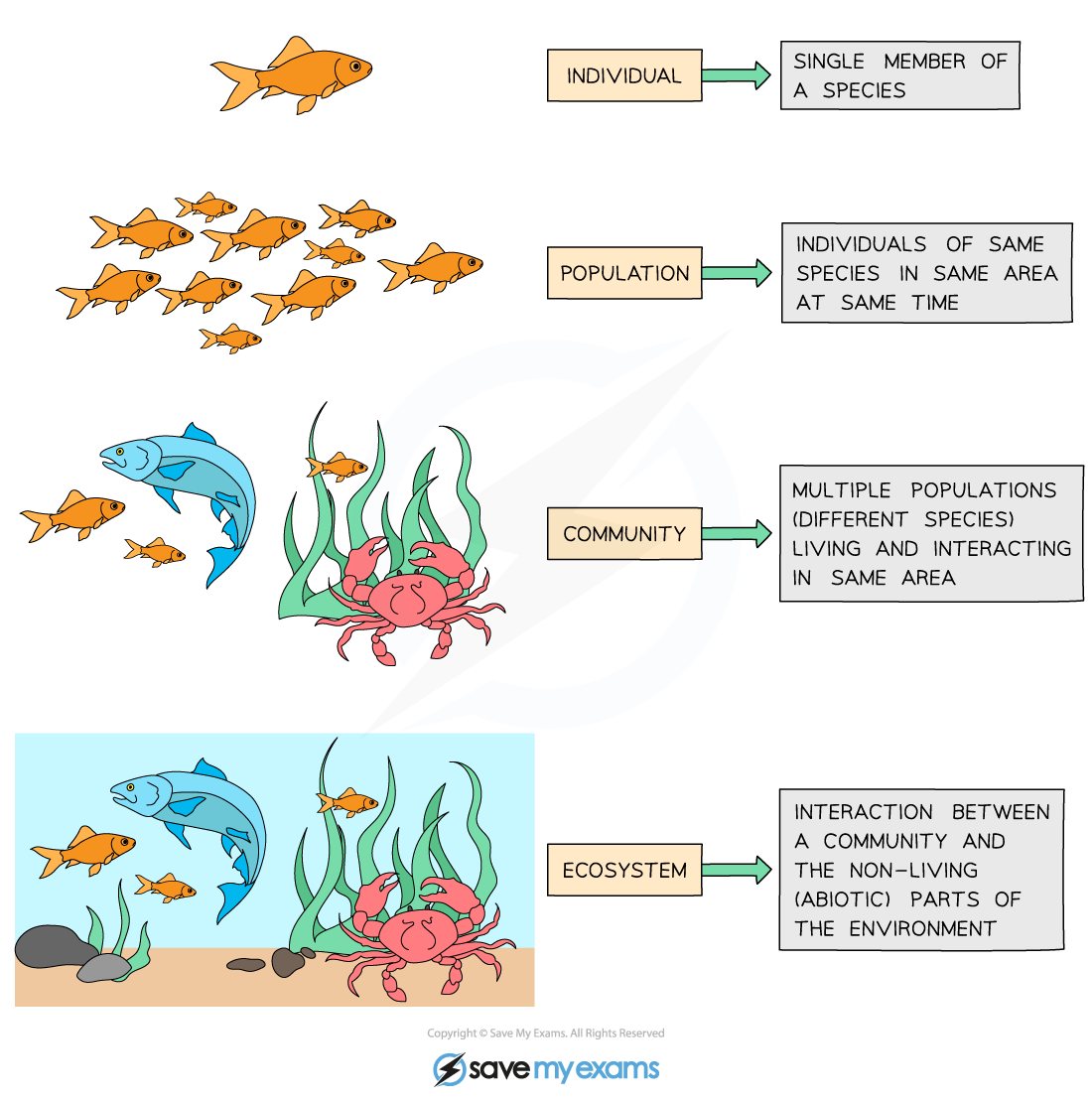Ecosystems (Cambridge (CIE) AS Environmental Management)
Revision Note

Author
Alistair MarjotExpertise
Biology & Environmental Systems and Societies
Introduction to Ecosystems
The biosphere is the life-sustaining zone where the air (atmosphere), water (hydrosphere) and land (lithosphere) meet
Many different biomes and ecosystems exist within the biosphere
The type of biomes and ecosystems present depends on which area of the planet they are located in
These biomes and ecosystems are mainly determined by the levels of water availability and the amount of insolation (the amount of sunlight they receive)
Biomes
Biomes are large-scale ecological communities or ecosystem types that are characterised by their dominant vegetation, climate, and other abiotic factors that shape their biotic communities
Biomes cover large geographic areas (different ecosystems can be found within a single biome)
Biomes are classified into five major classes:
Aquatic
Forest
Grassland
Desert
Tundra
Ecosystems
Ecosystems cover smaller geographic areas compared to biomes
An ecosystem includes living, biotic components (such as plants, animals and other species present) and the physical environment (the non-living, abiotic components) they interact with
These physical, abiotic components include factors such as temperature, light availability, humidity, water availability, oxygen levels, salinity, and pH
Population
A population is defined as a group of organisms of the same species living in the same area at the same time
Community
A community includes all of the populations living in the same area at the same time
Within a community, each species depends on other species for food, shelter, pollination, seed dispersal etc
If one species is removed it can affect the whole community
This is called interdependence

Habitat
A habitat is the local environment in which a species normally lives
E.g. badgers, deer, oak trees and ants are all species that would live in a woodland habitat
Organisms adapt to their habitat through natural selection, in order to survive and reproduce successfully
Niche
A niche describes the particular set of abiotic and biotic conditions and resources to which an organism or population responds
A niche can only be occupied by one species, meaning that every individual species has its own unique niche
If two species try to occupy the same niche, they will compete with each other for the same resources
One of the species will be more successful and out-compete the other species until only one species is left and the other is either forced to occupy a new, slightly different niche or to go extinct from the habitat or ecosystem altogether
For example, the three North American warbler species shown below all occupy the same habitat (spruces and other conifer trees) but occupy slightly different niches as each species feeds at a different height within the trees
This avoids competition between the three species, allowing them to co-exist closely with each other in the same habitat

Exam Tip
It can difficult to understand the concept of a niche. It can help to think of it as the specific role a species plays within its habitat, including its behaviours, the resources it consumes, and the specific places where it feeds and shelters.

You've read 0 of your 0 free revision notes
Get unlimited access
to absolutely everything:
- Downloadable PDFs
- Unlimited Revision Notes
- Topic Questions
- Past Papers
- Model Answers
- Videos (Maths and Science)
Did this page help you?